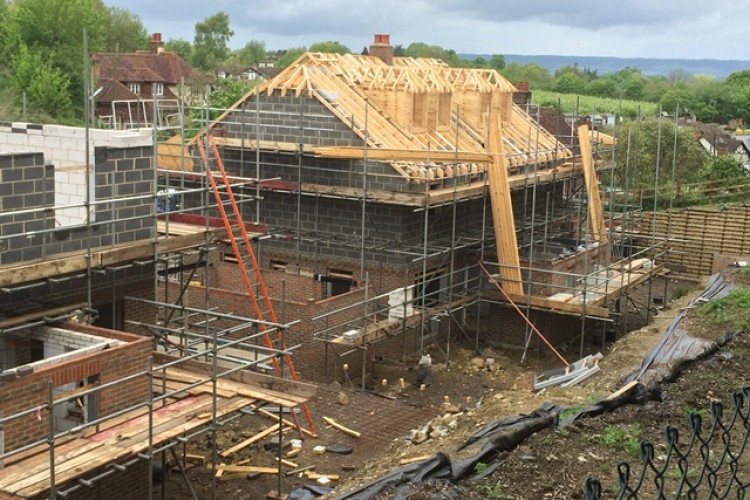Lack of finance and difficulties with the planning system are also commonly cited complaints.
The Federation of Master Builders sent a survey to 2,156 of its member firms who list house-building as one of their trades for its annual survey; of these, 108 (5%) responded.
Respondents were asked to identify what they saw as the major barriers to increasing their output of new homes, both currently and looking ahead over the next three years.
‘Lack of available and viable land’ was the most commonly cited barrier to increasing output (67% of respondents) for the second year in a row.
In joint second place as barriers to increasing output came ‘lack of finance to the company’ (50%) and ‘the planning system’ (50%).
Although 16% of respondents reported improved lending conditions, 75% said there had been no improvement.
Respondents were asked various questions about the bureaucracy, cost and effectiveness of the planning system. 43% said that they believed the burden of information requirements for any given planning application is increasing, 52% see no real change, and only 5% believe they have seen a decrease.
.png)
Given a list of suggested factors, respondents rated ‘inadequate resourcing of planning departments’ as the most significant cause of delays in the planning application process.
They rated ‘excessive information requirements’ as the most significant cause of additional cost in the planning application process.
The skills shortage also appears to be getting worse. The percentage of respondents citing a shortage of skilled workers as a major barrier to growth rose markedly from 27% last year to 39% this year.
FMB chief executive Brian Berry said: “The biggest challenge facing SME house-builders is the planning process. Councils need to find a way of allocating and granting planning permission for more small sites. The current focus on large sites is squeezing out smaller developers, which is reducing competition in the housing market at a time when we need more, not less, choice. The limited supply of opportunities for small scale development is one of a number of key structural constraints that has seen the number of homes built by SMEs decline from around two thirds in the late 1980s to less than a quarter today.”
Mr Berry continued: “It is absurd that the planning system treats a 300-home application in largely the same way it treats a three-home application. While the government has attempted to remove red tape in its drive to increase the number of homes being built, it would appear that its reforms have yet to make a difference. 95% of SME house-builders report that the information demands being placed on them during the planning application process have either increased or remain as bad as they were before. Our survey shows that the primary cause of unnecessary delays is the planning process, with the under-resourcing of planning departments being the most important concern.”
He said: “SME house-builders must be seen as a key component of the government’s housing strategy. This means a renewed focus on granting planning permission to small sites. At the same time, the government needs to press ahead with its proposed planning reforms, including a presumption in favour of small scale development. Planning departments also need to be adequately resourced so that they have the capacity to engage more closely with SME house-builders and ensure planning applications are processed through the system as speedily and efficiently as they can be.”
The FMB House Builders’ Survey 2016 is available at: http://go.fmb.co.uk/2cCK58D
Got a story? Email news@theconstructionindex.co.uk



